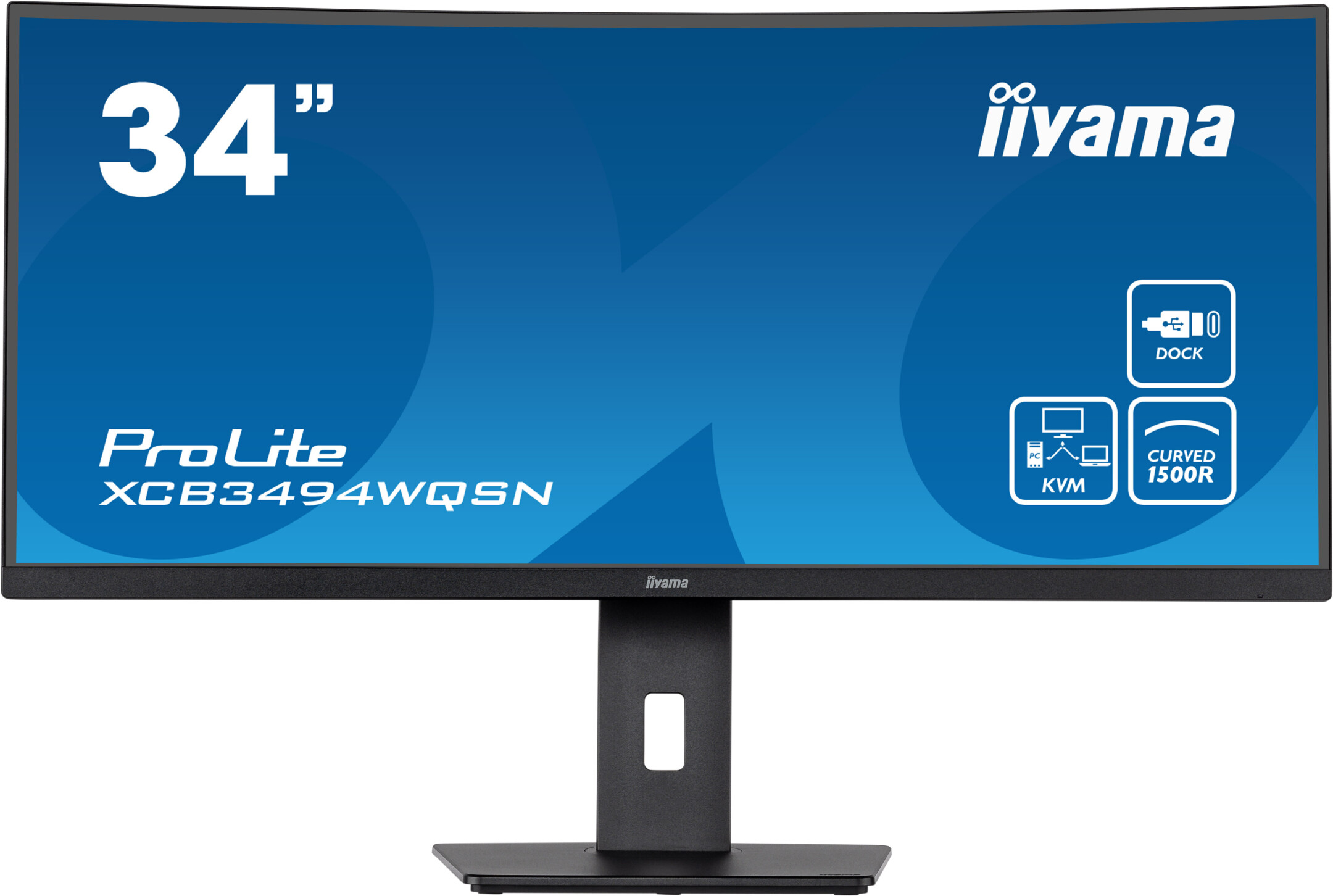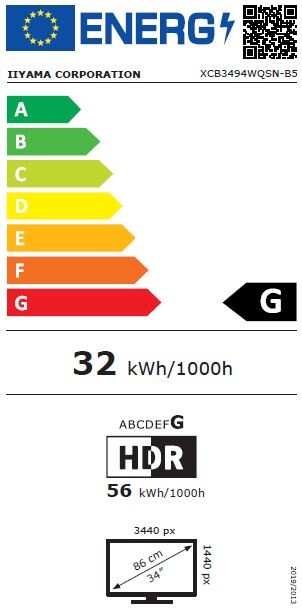











































£309.48*
- Resolution 3440 x 1440 UWQHD
- Diagonal 34"
- Panel type VA
- Refresh Rate 120Hz



Product information
The 34" (86.4 cm) XCB3494WQSN curved monitor guarantees a comfortable and immersive viewing experience thanks to the 1500R curvature of the screen. The integrated VA panel with UWQHD resolution (3440x1440) offers excellent picture quality and high contrast levels. Equipped with a KVM switch, the XCB3494WQSN allows connection to multiple computers that can be operated via one console (monitor, keyboard, mouse). The USB-C dock provides a clean and convenient workspace by allowing only a single cable to be used to allow simultaneous transfer of data, video and audio signals, all without loss of quality. In addition, the connected device is charged directly through the monitor. When the monitor is connected to the Internet via a LAN cable, your notebook is also automatically connected to the network.
The height-adjustable 150 mm stand ensures that you can adjust the position of the screen to suit your preferences, and the flicker-free panel with blue light reduction function reduces eye fatigue.
KVM SWITCH
Thanks to the KVM switch function on your monitor, you can share connected devices with two different computers via USB dock. You simply change the signal input in the monitor's OSD menu and your keyboard, mouse and webcam instantly switch from your notebook to your PC.
USB-C DOCK
The USB-C dock gives you the ability to connect a laptop* to the monitor with a single cable. All data is transferred extremely quickly while you power and charge your device at the same time. Additional USB ports also allow you to connect a PC mouse, keyboard or webcam to the monitor. Enjoy tidiness on your desk and avoid an annoying tangle of cables.
CURVED DESIGN 1500R
The 1500R curvature of the screen reduces eye strain while providing a realistic viewing experience, allowing for wider and more natural viewing angles compared to flat monitors lined up side by side, for example. The result is a more immersive experience that increases productivity and focus, whether you're working, editing, gaming or entertaining in other ways.
ULTRA WIDE - UWQHD
The UWQHD (UltraWide QHD) resolution offers an enormous workspace in 21:9 format.
HAS 150MM
The height-adjustable base allows you to position the screen perfectly, ensuring optimal viewing comfort. Is good for your health and also increases productivity.
Technical data
| Name | iiyama PROLITE XCB3494WQSN-B5 34" VA Monitor, 3440 x 1440 UWQHD, 120Hz, 1ms |
|---|---|
| Article number | 1000026492 |
| GTIN/EAN | 4948570121410 |
| Manufacturer SKU | XCB3494WQSN-B5 |
| EPREL ID | 1396054 |
| Model name | PROLITE XCB3494WQSN-B5 |
| Brand | iiyama |
| Product Type | Monitor |
| Product Series | iiyama Prolite X Series |
| Technology | LCD |
| Panel type | VA |
| Resolution | 3440 x 1440 UWQHD |
| Diagonal | 34" |
| Aspect Ratio | 21:9 |
| Viewing angle - Horizontal | 178° |
| Viewing angle - Vertical | 178° |
| Contrast Ratio | 3,000 :1 |
| Max. Brightness | 300 cd/m² |
| Response time | 1ms |
| Refresh Rate | 120Hz |
| Support - VESA | 100 x 100 |
| Inputs | 1x Displayport , 1x Ethernet , 1x HDMI , 1x USB-C , 3x USB-A |
| Features | Flicker Free , Integrated speaker |
| Product width | 80.95 cm |
| Product height | 43.1 cm |
| Product depth | 24.55 cm |
| Weight | 9.4 kg |
| Colour | Black |
| EEK Spectrum | A to G |
| Energy efficency class | G |
| Delivery contents | HDMI Cable , Power cable , USB-C Cable , USB cable |
| Condition | New |
| Warranty | 24 Month |
| Warranty type | Bringin service Service and support information |
Downloads
Product safety
| Person responsible for the EU |
|---|
| iiyama International Corporate |
| Wijkermeerstraat 8 |
| 2131 HA Hoofddorp |
| Netherlands |
| info.de@iiyama.com |



